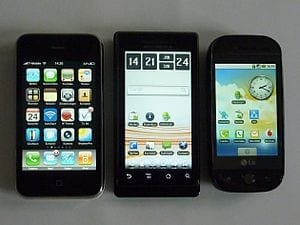They can help us pass the time, socialise and yes, even work, but can smartphones also help us save the planet?
A paper recently published in the International Journal of Sustainable Energy suggests they can.
Four researchers from Canada, Patrick Leslie, Joshua M. Pearce, Rob Harrap and Sylvie Daniel, investigated how smartphones could be used in energy ‘audits’, designed to help householders adopt energy conservation measures (ECMs) to reduce emissions, conserve resources and reduce operating costs.
Traditionally, energy audits are undertaken by trained staff who travel from house to house, burning lots of petrol on the way. Their audits tend to focus on heating and cooling, and ignore other energy-thirsty devices, such as appliances. As the authors note, householders don’t often lack the ability to make the energy-saving changes the auditors suggest, ‘but the ability to recognize which changes are possible and which have the largest potential to reduce energy use’. The vast majority of homes will also never have such an audit. Enter the smartphone.
Rather than waiting for an audit, the authors suggest that if suitable software could be created, householders could perform their own with their smartphones. Much of the technology needed already exists: phone sensors can take pictures for reports, act as crude light meters or confirm a variety of measurements; GPS data is already available for a wide range of applications. Even existing technology could analyse users’ appliances, provide the energy-efficiency rankings of similar homes, and give breakdowns of current energy use.
The authors envisage an intuitive tool with which an untrained user would be able to choose their house type, energy source and payment method, choose an ECM and input data as instructed. For example, a user might provide the type and number of light fittings in their home, then receive suggestions for energy-saving replacements in real time; as technology developed, the range of tasks that could be performed by smartphone would grow.
A smartphone could also ‘push’ users to make changes when conditions are right, for example, when a federal rebate or cheaper tariff was available. Unlike the traditional ‘one-off’ audit, this system ‘has the potential to keep users actively involved and constantly engaged with the energy efficiency of their homes’.
via AlphaGalileo Foundation – Taylor & Francis
The Latest Streaming News: Building energy conservation strategies updated minute-by-minute
Bookmark this page and come back often
Latest NEWS
Latest VIDEO








